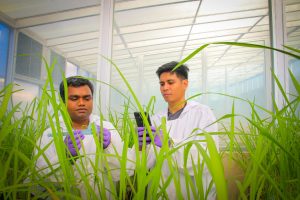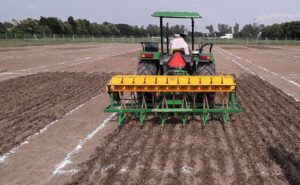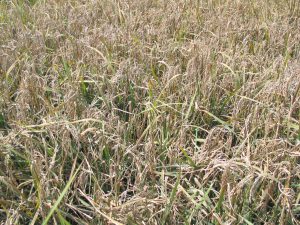
The Hybrid Rice Development Consortium (HRDC) was established at the International Rice Research Institute (IRRI) in 2008 with 38 public and private organizations. Its membership then expanded to 47 organizations in 2009 as it aimed to renew and strengthen the collaboration between the private and the public sector and to enhance the dissemination of hybrid rice technology.
This technology has been used as a key tool in increasing rice production and productivity since the 1970s. The area covered by hybrid rice in 2008 reached 20 million hectares globally, including 3 million hectares in countries outside China. IRRI, collaborating with public and private partners, has contributed significantly to the research and development of hybrid rice in the tropics— providing many research findings, technical support, and germplasm and hybrids for breeding and release.
Hybrid rice research began in public institutes, as it was essential to provide basic scientific information and know-how on the technology, adoption, economics, and policy support. As the technology advanced, private enterprises became more involved in all aspects of hybrid rice research and development; they even invested in hybrid rice seed businesses. The shift of hybrid rice from academic research to commercialization requires a close partnership between the public and the private sector to enhance the steady stream of innovation and research outputs, and to improve product accessibility and commercial use ultimately by rice farmers.
The private sector in the seed industry has a comparative advantage in large scale commercial production, seed processing, and marketing—areas in which IRRI and public institutes have no direct involvement. However, the public sector has expertise in scientific research, product assessment, germplasm development, technology dissemination, and capacity building. To combine these complementary advantages is beneficial to both parties and encouraging private sector involvement is critical in ensuring the sustainable growth of hybrid rice.
Through the HRDC, IRRI contributes in three areas: (1) enhanced research on specific traits of hybrid rice, such as increasing yield and increased and stable yield of seed production, improved resistances to stresses, and improved grain quality; (2) improved germplasm/hybrids that have diverse genetic background and that have been evaluated by network organizations around the world; and (3) better information and capacity building, including the best management practices to realize high yield potential, germplasm/hybrid evaluation, molecular technology application, and other advanced research related to rice.
 During the past years, HRDC members have met annually to review the progress of hybrid rice at IRRI. They identified and validated common issues challenging the research and development of hybrid rice and the constraints that limited public-private partnership. As a result of these evaluations, the members developed a new transparent mechanism to improve their collaboration. They discussed priorities and identified areas that urgently needed to be improved. Recognizing the importance of accessing IRRI’s hybrid rice products and information, IRRI’s hybrid rice program has taken a product-oriented approach to focus more on product development and delivery.
During the past years, HRDC members have met annually to review the progress of hybrid rice at IRRI. They identified and validated common issues challenging the research and development of hybrid rice and the constraints that limited public-private partnership. As a result of these evaluations, the members developed a new transparent mechanism to improve their collaboration. They discussed priorities and identified areas that urgently needed to be improved. Recognizing the importance of accessing IRRI’s hybrid rice products and information, IRRI’s hybrid rice program has taken a product-oriented approach to focus more on product development and delivery.
The HRDC has built a regional hybrid testing network to assess its members’ hybrid rice in varying environments across the different countries and locations. Member breeders are invited to participate in selection for hybrid rice breeding lines developed at IRRI—and these lines can be further evaluated in members’ environments and then integrated into their own breeding programs.
The HRDC believes that members can speed up research on hybrid rice if they can all pool together the resources gathered from the private and public sector. This would allow them to form strong support and an endowment that would result in the development of a wider range of hybrid products – from which the general public could also considerably benefit.
The HRDC significantly enhances the capacity for hybrid rice research at IRRI and also works to boost product delivery with improved hybrid rice germplasm, research output, information, and training. The public sector benefits from the collaboration by actively participating in the research and development: learning the needs of the seed market and adjusting research activities. Farmers, however, benefit the most from the improved pipeline for product development because they can avail of more and better rice hybrids that can increase rice productivity at reduced costs.

It is important to note that the HRDC, which is hosted at IRRI, is not a competitor of private enterprises in the seed market. Its role is to provide research services and support to both the public and private sector. The consortium endeavors to establish a new public-private partnership model that will maximize the use of modern agricultural technology to produce hybrid rice and make an impact on rice production.
Successful partnerships between the private and the public sector can prove to be the key to making research programs sustainable. This would create clear accountability among partner organizations, and allow all parties to capitalize on each organization’s strengths. Drawing lessons from the HRDC’s experience could serve well in building new public-private partnerships for seed-based technologies in the future.










